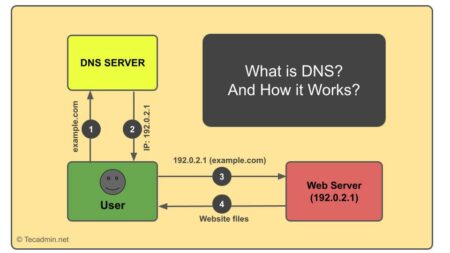The protocols used to receive emails are an essential part of how the internet functions, and yet they remain largely invisible to most users. Two of the most common protocols are Internet Message Access Protocol (IMAP) and Post Office Protocol version 3 (POP3). Each serves a unique purpose and offers different benefits and drawbacks. Understanding the differences between IMAP and POP3 can help users make an informed decision on which one suits their email needs best.
IMAP (Internet Message Access Protocol)
The Internet Message Access Protocol (IMAP) is a mail protocol used for accessing email on a remote web server from a local client. It was designed to allow multiple clients to access the same mailbox, making it ideal for users who access their email from multiple devices or locations.
With IMAP, email messages are kept on the server until the user deletes them. This means that when you log into your email account from a different device, all your emails are available, regardless of where you initially received them. The folders that you create and the flags that you apply to your messages (e.g., read/unread, important, deleted) are all stored on the server as well.
This can be beneficial in case of a system failure, as your emails are stored on the server and can be retrieved. The drawback is that since the emails are stored on the server, they consume storage space, and you may run out of it if your email host provides limited server storage.
POP3 (Post Office Protocol version 3)
Post Office Protocol (POP3) is another mail protocol used by local email clients to retrieve email from a remote server over a TCP/IP connection. It is simple and highly efficient for users who only have a single device to access their email.
Unlike IMAP, POP3 downloads the email from the server onto the local device, then often deletes the email from the server. Because the messages are stored locally, you can read your emails offline. Also, it doesn’t take up server space over the long term, which could be an advantage if your email host provides limited server storage.
However, since the emails are downloaded to the device from which they are accessed, they are not available if you try to access your mail from any other device. Moreover, if your local storage gets corrupted or crashes, you may lose all your emails.
IMAP vs POP3: Key Differences
Here is a comparison table outlining the key differences between IMAP and POP3:
| Feature | IMAP | POP3 |
|---|---|---|
| Synchronization | Synchronizes changes across all devices | Changes made do not reflect on other devices |
| Storage | Emails stored on the server | Emails downloaded and often deleted from server |
| Access | Access to old mail and server-stored folders | Once downloaded, mail is typically removed from the server |
| Offline Availability | Works best with an active internet connection, some emails cached for offline viewing | Emails are downloaded to the device and can be viewed offline |
| Multiple Devices | Ideal for users accessing email on multiple devices | Better suited for single device access |
| Impact of Data Loss | Lower risk as data is stored on server | Higher risk as data is stored locally, and loss of device can mean loss of emails |
| Server Space | Can consume significant server space | Frees up server space after email retrieval |
Conclusion
The choice between IMAP and POP3 depends on your specific needs and how you typically access your email. If you use multiple devices to check your mail, IMAP could be the best choice due to its synchronization capabilities. If you prefer to conserve server space and read emails offline, then POP3 might be a better option. It’s important to note that these aren’t the only protocols for email, but they are among the most common and widely used. Understanding how they work can help you make the best choice for managing your digital communication.

